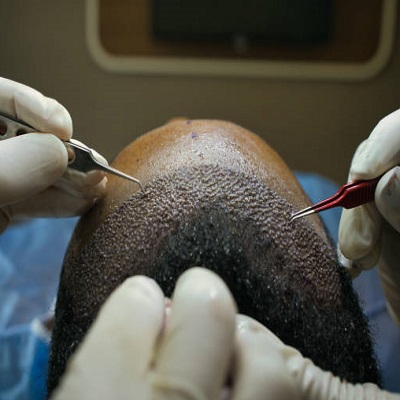Hair loss can significantly impact self-esteem and confidence, leading many individuals to explore surgical options for hair restoration. In recent years, technological advancements have introduced robotic assistance in the field of hair transplantation, making the process more precise, efficient, and effective. One of the most advanced techniques available today is the robotic hair transplant, which uses artificial intelligence and robotic precision to extract and implant hair follicles. For individuals considering a Hair transplant in Islamabad, robotic technology offers a modern solution with exceptional accuracy and natural-looking results.
What Is a Robotic Hair Transplant?
A robotic hair transplant is an advanced form of Follicular Unit Extraction (FUE) that uses a specialized robotic system, such as the ARTAS Robotic System, to assist in the harvesting and placement of hair follicles. Unlike manual techniques, where the surgeon performs most of the work by hand, robotic systems use sophisticated algorithms to identify and extract optimal follicular units with high precision. The robotic arm performs thousands of repetitive movements with consistent speed and accuracy, minimizing the risk of human error.
This technology is particularly effective for patients looking for minimal scarring, faster recovery, and highly aesthetic outcomes.
How Does Robotic Hair Transplant Work?
The robotic hair transplant process follows a multi-step procedure under the supervision of a trained surgeon:
1. Digital Scalp Mapping
The system captures detailed images of the scalp to identify suitable donor follicles. It evaluates hair angle, direction, and density to develop an accurate extraction plan.
2. Automated Follicle Harvesting
The robot uses a robotic arm to extract individual follicular units from the donor area with micron-level accuracy. This minimizes trauma to the surrounding tissues and ensures a higher survival rate of grafts.
3. Graft Preparation and Preservation
Once extracted, the grafts are preserved in a controlled environment to maintain viability until they are implanted.
4. Recipient Site Creation
Some robotic systems can also assist in creating recipient sites, ensuring that the angle and direction of implantation mimic natural hair growth patterns.
5. Graft Implantation
Finally, the surgeon or a skilled technician implants the grafts into the recipient area. While the robotic system enhances extraction and site creation, implantation is usually performed manually for greater control.
Advantages of Robotic Hair Transplantation
Robotic hair transplantation offers several key benefits that distinguish it from traditional manual methods:
1. Enhanced Precision
The robotic arm can perform movements with incredible consistency and accuracy, significantly reducing the risk of human error and follicular transection.
2. Faster Procedure
Robotics streamlines the extraction process, reducing the overall duration of the surgery. Patients benefit from shorter in-clinic time.
3. Consistent Graft Quality
By selecting the healthiest follicles and extracting them with minimal trauma, robotic systems maintain a higher average graft quality.
4. Minimal Scarring
Since robotic transplants are based on the FUE technique, they involve tiny, circular incisions that heal quickly and leave no linear scars.
5. Data-Driven Decisions
Digital mapping and artificial intelligence ensure a personalized and strategic approach to hair restoration, improving both short- and long-term outcomes.
6. Reduced Fatigue for Surgeons
Performing manual FUE is physically demanding. Robotic systems relieve some of this burden, allowing the surgeon to maintain focus throughout the procedure.
Who Is a Candidate for Robotic Hair Transplant?
Ideal candidates for robotic hair transplantation include:
- Individuals with stable hair loss patterns who have not experienced recent rapid shedding
- Those with good donor hair density
- Patients who want minimally invasive surgery with little downtime
- People interested in high-precision, natural-looking results
However, robotic hair transplant may not be suitable for everyone. Individuals with curly or very fine hair may require a manual approach, as robotic systems are primarily optimized for straight hair.
Limitations and Considerations
While robotic hair transplantation is innovative, it’s essential to understand the limitations:
1. Cost
Robotic procedures are generally more expensive due to the high cost of equipment and technology licensing.
2. Not Fully Automated
Although the robot assists in critical phases, the surgeon still plays a significant role, especially in planning, oversight, and implantation.
3. Availability
Not all clinics are equipped with robotic hair transplant systems, and accessibility can vary by region. Fortunately, select clinics in Islamabad offer this advanced option.
Why Islamabad Is Emerging as a Hub for Robotic Hair Transplants
Islamabad is becoming a preferred destination for medical tourism in Pakistan, particularly in cosmetic and hair restoration procedures. The city offers:
- State-of-the-art clinics
- Qualified and internationally trained surgeons
- Cost-effective packages compared to global standards
- Aesthetic expertise in delivering natural hairlines and high-density transplants
Moreover, patients in Islamabad can benefit from advanced technologies such as robotic systems without the need to travel abroad, making it an appealing and accessible option.
What to Expect During Recovery
Recovery after a robotic hair transplant is generally faster compared to FUT or even manual FUE. Most patients experience:
- Minor swelling or discomfort in the first few days
- Scabbing at the extraction and recipient sites
- Full recovery within 7–10 days
- Visible hair shedding of the implanted grafts after 2–3 weeks (a normal part of the cycle)
- New hair growth starting around the 3-month mark, with full results evident in 9–12 months
Adherence to post-operative instructions and proper care significantly affects the final outcome.
Final Thoughts
Robotic hair transplantation is a significant advancement in the field of hair restoration. It combines technology and surgical precision to offer patients a safer, faster, and more accurate alternative to traditional procedures. While not suitable for every case, it is particularly beneficial for those seeking refined, minimally invasive treatments with fewer risks and consistent results.
Patients considering this option should consult an experienced and qualified provider to determine whether robotic technology aligns with their specific hair loss condition and goals. Those seeking professional care in Pakistan can turn to SKN Cosmetics clinic in Islamabad, a trusted name in hair restoration offering advanced solutions—including robotic hair transplant techniques—tailored to meet individual patient needs.
 WhatsApp Us Now
WhatsApp Us Now








